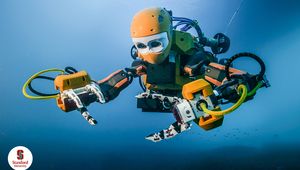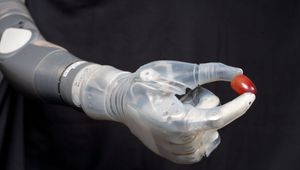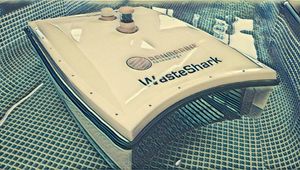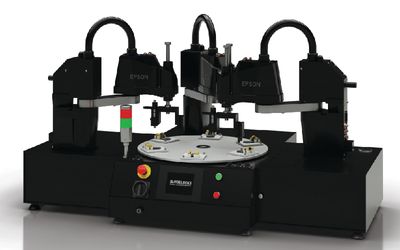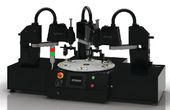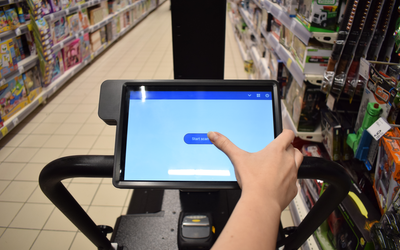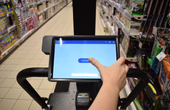Analog Devices ADTF3175 1-MegaPixel Time-of-Flight Module
Time-of-Flight (ToF) module for high-resolution 3D depth sensing and vision systems.
General
| Product Type | Sensors |
| Applications | Collaborative Robotics, 3D Printing & Manufacturing, Artificial Intelligence & Machine Learning, IoT & Smart Systems |
| Key Features | High-Resolution Time-of-Flight Imaging, Integrated Illumination and Eye Safety, Interface and Control Options, Calibration and Depth Sensing |
Technical Specifications
| Product Category | Distance Sensor Module |
| Type | Time-of-Flight Module |
| Resolution | 1024 x 1024, 512 x 512 |
| Interface Type | I2C, SPI |
| Mounting Style | SMD/SMT |
| Dimensions | 42 mm × 31 mm × 15.1 mm |
| Applications | Machine Vision Systems, Robotics, Building Automation, Augmented Reality (AR) Systems |
Overview
The ADTF3175 by Analog Devices is a compact, high-resolution Time-of-Flight (ToF) module designed for 3D depth sensing applications. Built around a 1-megapixel CMOS imager, it integrates key components like a lens, infrared illumination source, and power regulators. Fully calibrated for various range and resolution settings, the module outputs raw image data which requires external processing for depth calculation. It interfaces with the host via a 4-lane MIPI CSI-2 Tx interface and is controlled through SPI and I2C serial interfaces. With its small size and wide operating temperature range, the ADTF3175 is suitable for various applications demanding accurate depth sensing.
ADTF3175 1-MegaPixel Time-of-Flight Module Features
The ADTF3175 is a complete Time-of-Flight (ToF) module for high-resolution 3D depth sensing and vision systems. This compact module integrates advanced components and features to deliver precise and reliable depth information for a wide range of applications. Let’s explore its notable features:
High-Resolution Time-of-Flight Imaging
The ADTF3175 incorporates a 1 Megapixel ToF imager featuring 1024 x 1024 pixels with a pixel size of 3.5 μm x 3.5 μm. This configuration delivers high-resolution depth data across a 75° x 75° field of view (FOV), ensuring broad coverage in 3D vision applications. The imager lens subassembly is integrated with a 940nm bandpass filter, enhancing the accuracy of depth measurements by filtering out unwanted light.
Integrated Illumination and Eye Safety
The illumination subassembly of the ADTF3175 is designed for efficiency and safety. It includes an infrared light source with optics, a laser diode, and a laser diode driver, all engineered to comply with eye safety standards. This ensures reliable depth-sensing performance while maintaining user safety, especially in applications involving human interaction. The module also includes power regulators to generate the necessary supply voltages for the imager and illumination components.
Interface and Control Options
The ADTF3175 module offers robust connectivity and control features. It supports a 4-lane MIPI Camera Serial Interface 2 (CSI-2) Tx interface, with each lane operating at 1.5 Gbps, facilitating high-speed data transfer. Additionally, the module can be programmed and operated via 4-wire SPI and 2-wire I2C serial interfaces, providing flexibility in system integration and communication. Onboard flash memory (NVM) stores essential data for module boot-up sequences
Calibration and Depth Sensing Performance
The ADTF3175 is calibrated for optimal performance across multiple resolution modes, including 1024 × 1024 and 512 × 512 pixels. It is designed to operate effectively within a depth range of 0.4 meters to 4 meters, with a depth accuracy of ±5 mm. Onboard non-volatile memory (NVM) stores essential boot-up information, while integrated power regulators maintain stable operation for the imager and illumination components.
The module is housed in a compact 50-lead, MODULE, ML-50-1 package, measuring 42mm x 31mm x 15.1mm. Designed for robust operation, the ADTF3175 can withstand temperatures ranging from -20°C to +65°C, making it suitable for various indoor and outdoor applications.
Applications
The ADTF3175 1-MegaPixel Time-of-Flight Module offers high-resolution depth sensing capabilities making it a suitable choice for numerous applications. In machine vision, it enables advanced object recognition, inspection, and measurement tasks. Robotics benefit from improved obstacle avoidance, navigation, and object manipulation. Building automation systems can leverage the module for occupancy detection, people counting, and environmental monitoring. Finally, augmented reality applications can enhance user experiences by accurately overlaying virtual objects onto real-world environments using the module's depth information.
Where to find it

Mouser Electronics
Mouser Electronics is a worldwide leading authorized distributor of semiconductors and electronic components.
References
Recommended Specs
Continue Reading
Red Teaming Vs Pen Testing: Understanding the Distinctive Nature and Purpose of Cybersecurity Tactics
Discover the differences between red teaming and pen testing to ensure your organization is taking advantage of both approaches for optimal cyber security.
